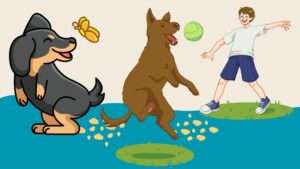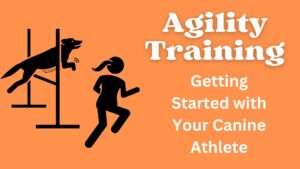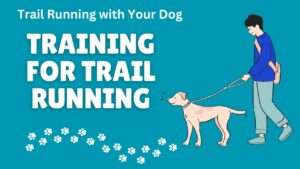Have you ever felt the rush of wind against your face as you glide through scenic trails, powered not just by your own strength, but also by the boundless energy and enthusiasm of your furry companion? Welcome to the exhilarating world of bikejoring – a thrilling sport that combines the joy of biking with the companionship of your canine friend.
In this complete guide, we’ll delve into the basics of bikejoring, exploring everything from equipment essentials to training tips, and uncovering the key elements that make this sport a favorite among outdoor enthusiasts and dog lovers alike.
So, fasten your helmet, leash up your pup, and let’s embark on an adventure like no other!
Contents Overview
What is Bikejoring?
Bikejoring is a dynamic outdoor activity where a cyclist is pulled along by one or more dogs harnessed to the front of the bike. Originating from sled dog sports like mushing, bikejoring offers a thrilling alternative for dog owners who crave adventure but lack access to snowy terrain.
The Essential Gear for Bikejoring Adventures
Before venturing into the exciting world of bikejoring, it’s essential to gather the right gear to ensure a safe and enjoyable experience for both you and your furry companion. Let’s explore each piece of essential equipment in detail:
- Bike:
- Choose a sturdy, well-maintained bike suitable for off-road riding.
- Consider a mountain bike or a hybrid bike with durable tires and reliable brakes for optimal performance on varied terrain.
- Ensure that the bike is properly sized and adjusted to fit your body for maximum comfort and control.
- Bikejoring Attachment:
- A bikejoring attachment is a specialized piece of equipment that connects your dog’s harness to the bike.
- It typically consists of a rigid or flexible arm that attaches to the bike’s frame near the front wheel.
- Some attachments feature quick-release mechanisms for easy detachment in case of emergencies.
- Alternatively, you can create a DIY bikejoring setup using a bungee cord or towline attached securely to the bike’s frame.
- Dog Harness:
- Choose a harness specifically designed for pulling activities like bikejoring.
- Look for a harness with padded straps and adjustable buckles to ensure a comfortable fit for your dog.
- The harness should distribute the pulling force evenly across your dog’s body to prevent discomfort or injury.
- Avoid using a collar or neck-based harness, as they can restrict your dog’s breathing and cause neck strain during pulling.
- Towline:
- The towline is a crucial component that connects the dog’s harness to the bike.
- Opt for a strong, durable towline made from materials like polyethylene or nylon.
- Look for a towline with built-in shock absorption to minimize sudden jolts and provide a smoother ride for both you and your dog.
- Ensure that the towline is long enough to allow your dog to run comfortably alongside the bike without feeling restricted.
- Helmet:
- Safety should always be a top priority when bikejoring, so don’t forget to wear a helmet.
- Choose a helmet that meets safety standards and fits snugly on your head.
- Look for features like adjustable straps and ventilation to ensure a comfortable and secure fit during your rides.
- Replace your helmet if it becomes damaged or if you’re involved in a crash to maintain optimal protection.
- Gloves:
- Invest in a pair of gloves to maintain a firm grip on the handlebars and control the bike effectively.
- Choose gloves with padding and grip-enhancing features to reduce hand fatigue and improve handling.
- Look for breathable, moisture-wicking materials to keep your hands comfortable and dry during long rides.
Training Your Dog for Bikejoring Adventures
Proper training is essential to ensure a safe and enjoyable bikejoring experience for both you and your furry friend. Here’s a comprehensive guide to help you train your dog for this exhilarating sport:
- Basic Commands:
- Teach your dog essential commands like “go,” “stop,” “left,” and “right” to communicate effectively while on the trail.
- Start with basic obedience training to establish a foundation of trust and respect between you and your dog.
- Use positive reinforcement techniques such as treats, praise, and toys to reward desired behaviors and encourage learning.
- Introduction to the Bike:
- Before introducing your dog to the bike, familiarize them with its presence and sound.
- Allow your dog to sniff and investigate the bike while it’s stationary to alleviate any anxiety or curiosity.
- Gradually introduce movement by walking or rolling the bike around your yard or driveway, rewarding your dog for staying calm and relaxed.
- Harness and Equipment Familiarization:
- Introduce your dog to their bikejoring harness and other equipment gradually and in a positive manner.
- Allow your dog to sniff and explore the harness before gently placing it on their body, rewarding them for cooperation.
- Practice attaching the towline to the harness and allowing your dog to move freely while wearing it, reinforcing positive associations with the equipment.
- Introduction to Pulling:
- Start with short, gentle walks or runs alongside the bike to introduce your dog to the sensation of pulling.
- Use a lightweight, empty bike initially to minimize resistance and prevent your dog from feeling overwhelmed.
- Encourage your dog to pull by using verbal cues and offering rewards for forward movement.
- Gradual Progression:
- Gradually increase the distance and duration of your bikejoring sessions as your dog becomes more comfortable and confident.
- Start with short, slow rides on familiar trails, gradually building up to longer distances and faster speeds.
- Pay attention to your dog’s body language and energy levels, adjusting the pace and intensity of your rides accordingly.
- Trail Etiquette and Safety:
- Teach your dog to stay focused and attentive while on the trail, responding promptly to commands and cues.
- Practice good trail etiquette by yielding to other trail users, maintaining control of your dog at all times, and cleaning up after them.
- Prioritize safety by wearing appropriate gear, obeying local leash laws, and avoiding busy or hazardous trails during peak times.
- Consistency and Patience:
- Consistency is key to successful bikejoring training, so be patient and persistent in your efforts.
- Practice regularly and maintain a positive attitude, celebrating small victories and progress along the way.
- Remember that every dog learns at their own pace, so tailor your training approach to suit your dog’s individual needs and abilities.
By following these training tips and techniques, you’ll be well on your way to enjoying safe, rewarding bikejoring adventures with your canine companion. Remember to prioritize positive reinforcement, patience, and consistency throughout the training process, and most importantly, have fun exploring the great outdoors together!
Choosing the Right Trails for Bikejoring Adventures
Selecting the perfect trails for your bikejoring adventures is essential to ensure a safe, enjoyable experience for both you and your furry companion. Here’s a comprehensive guide to help you choose the right trails:
- Terrain Considerations:
- Opt for trails with relatively smooth surfaces and minimal obstacles to provide a comfortable riding experience for both you and your dog.
- Look for trails with packed dirt, gravel, or grassy surfaces that offer good traction and minimize the risk of slips and falls.
- Avoid trails with rough terrain, deep sand, or large rocks that could pose a hazard to you and your dog.
- Distance and Difficulty:
- Start with shorter, easier trails to acclimate your dog to the bikejoring experience and build their endurance gradually.
- Consider your dog’s fitness level, age, and breed characteristics when selecting trails, choosing routes that are suitable for their abilities.
- Gradually increase the distance and difficulty of your rides as your dog becomes more experienced and confident.
- Trail Accessibility:
- Choose trails that are easily accessible from your home or local area, minimizing travel time and stress for both you and your dog.
- Look for trails with ample parking, restrooms, and other amenities to enhance your overall experience.
- Consider the availability of water sources along the trail for hydration breaks, especially on hot days.
- Scenic Views and Points of Interest:
- Seek out trails with scenic views, natural beauty, and points of interest to enhance your bikejoring adventures.
- Look for trails that meander through forests, along rivers or lakeshores, or offer panoramic vistas of mountains or valleys.
- Take time to explore and appreciate the natural surroundings, stopping to rest and enjoy the scenery with your canine companion.
- Environmental Factors:
- Consider environmental factors such as weather conditions, seasonality, and time of day when choosing trails for bikejoring.
- Avoid biking in extreme heat, cold, or inclement weather conditions that could pose risks to you and your dog.
- Be mindful of potential hazards such as ice, mud, or debris on the trail, adjusting your route or pace accordingly to ensure safety.
- Trail Regulations and Etiquette:
- Familiarize yourself with local trail regulations, leash laws, and etiquette guidelines before embarking on your bikejoring adventure.
- Respect trail closures, wildlife habitats, and designated use areas, minimizing your impact on the environment and other trail users.
- Yield to hikers, runners, and other cyclists, maintaining control of your dog and keeping a safe distance from others on the trail.
By considering these factors and selecting trails that suit your dog’s abilities and preferences, you’ll be well-prepared to embark on exciting bikejoring adventures in the great outdoors. Remember to prioritize safety, enjoy the journey, and cherish the special bond you share with your furry friend as you explore new trails together!
Safety Precautions for Bikejoring Adventures
Safety should always be a top priority when engaging in bikejoring to ensure the well-being of both you and your furry companion. Here’s a detailed guide outlining essential safety precautions:
- Equipment Inspection:
- Regularly inspect all bikejoring equipment, including your bike, harness, towline, and other gear, for signs of wear, damage, or deterioration.
- Ensure that harness straps are securely fastened, towlines are free of frays or knots, and bike components are functioning properly before each ride.
- Hydration:
- Bring an ample supply of water for both you and your dog to stay hydrated during bikejoring adventures, especially on hot or sunny days.
- Consider using a hydration pack or water bottle holder attached to your bike for easy access to water while riding.
- Weather Conditions:
- Check weather forecasts before heading out on a bikejoring excursion and avoid biking in extreme weather conditions such as excessive heat, cold, wind, or precipitation.
- Dress appropriately for the weather, wearing layers to stay warm in cold temperatures and lightweight, breathable clothing in hot conditions.
- Be mindful of potential weather-related hazards such as icy or slippery trails, reduced visibility, or gusty winds that could affect your safety and control.
- Trail Awareness:
- Familiarize yourself with the terrain and features of the trails you’ll be biking on, including any potential hazards, obstacles, or steep inclines.
- Stay alert and attentive while riding, scanning the trail ahead for obstacles, wildlife, or other trail users, and adjusting your speed and direction accordingly.
- Maintain a safe distance from other cyclists, hikers, and runners on the trail, yielding the right of way and passing with caution when necessary.
- Leash Laws and Trail Regulations:
- Observe local leash laws and trail regulations when biking with your dog, keeping your dog on a leash or under voice control at all times to prevent accidents or conflicts with other trail users.
- Respect trail closures, designated use areas, and wildlife habitats, minimizing your impact on the environment and wildlife populations.
- Emergency Preparedness:
- Carry a basic first aid kit and emergency supplies with you on bikejoring rides, including bandages, antiseptic wipes, a cell phone, and emergency contact information.
- Familiarize yourself with the location of nearby veterinary clinics or animal hospitals along your route in case of emergencies or injuries to your dog.
- Communication and Control:
- Maintain clear communication with your dog during bikejoring rides, using verbal cues, hand signals, and positive reinforcement to guide their behavior and actions.
- Practice obedience training and recall exercises with your dog to ensure they respond promptly to commands such as “stop,” “go,” and “heel” while biking.
- Use a sturdy, secure leash or towline attachment to maintain control of your dog and prevent them from wandering into unsafe areas or encountering hazards on the trail.
By following these safety precautions and guidelines, you’ll be well-equipped to enjoy safe, rewarding bikejoring adventures with your furry companion. Remember to prioritize safety at all times, remain vigilant and prepared for potential hazards, and cherish the special bond you share with your dog as you explore new trails and embark on exciting outdoor adventures together!
Bottom Line
Bikejoring offers a unique opportunity to bond with your dog while enjoying the great outdoors in a fun and exhilarating way. With the right equipment, training, and safety precautions, you can embark on unforgettable adventures and create lasting memories with your canine companion by your side.
So, what are you waiting for? Grab your bike, harness up your pup, and get ready to unleash the adventure of a lifetime with bikejoring!





























+ There are no comments
Add yours